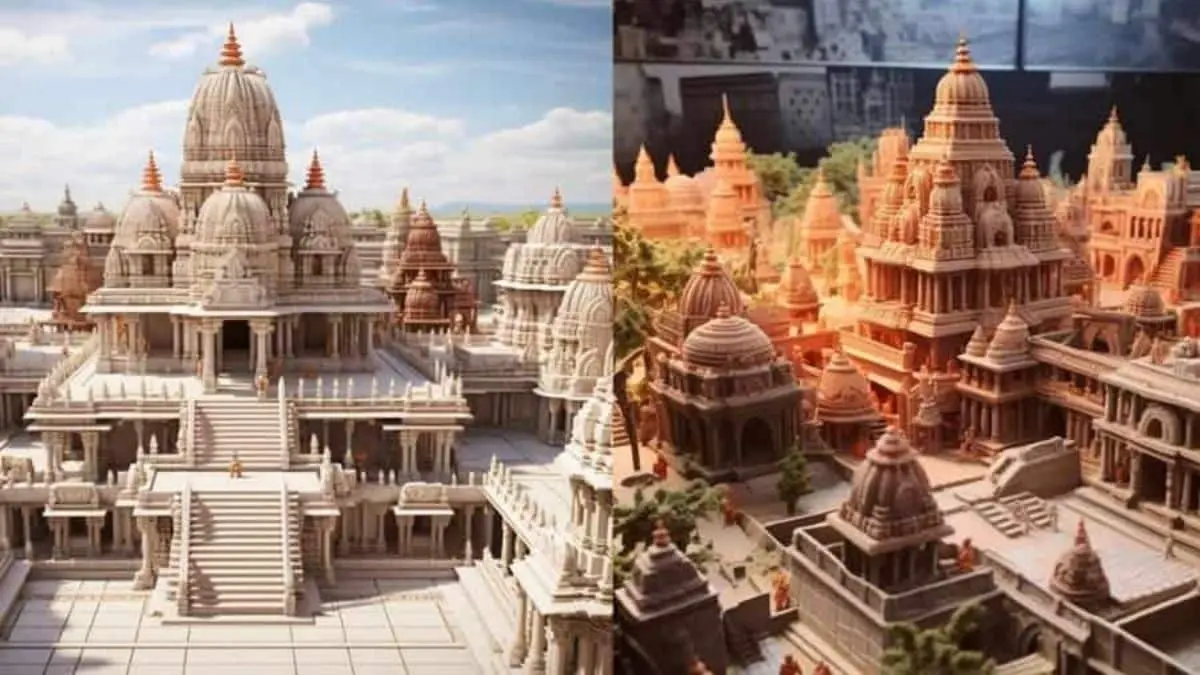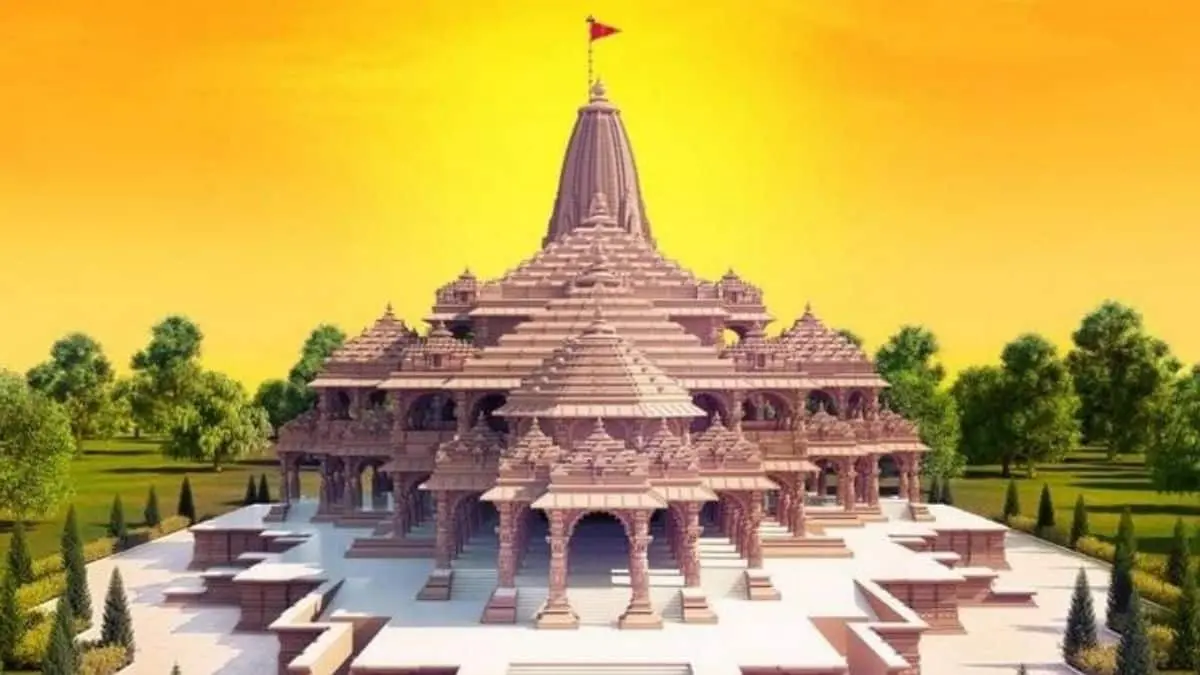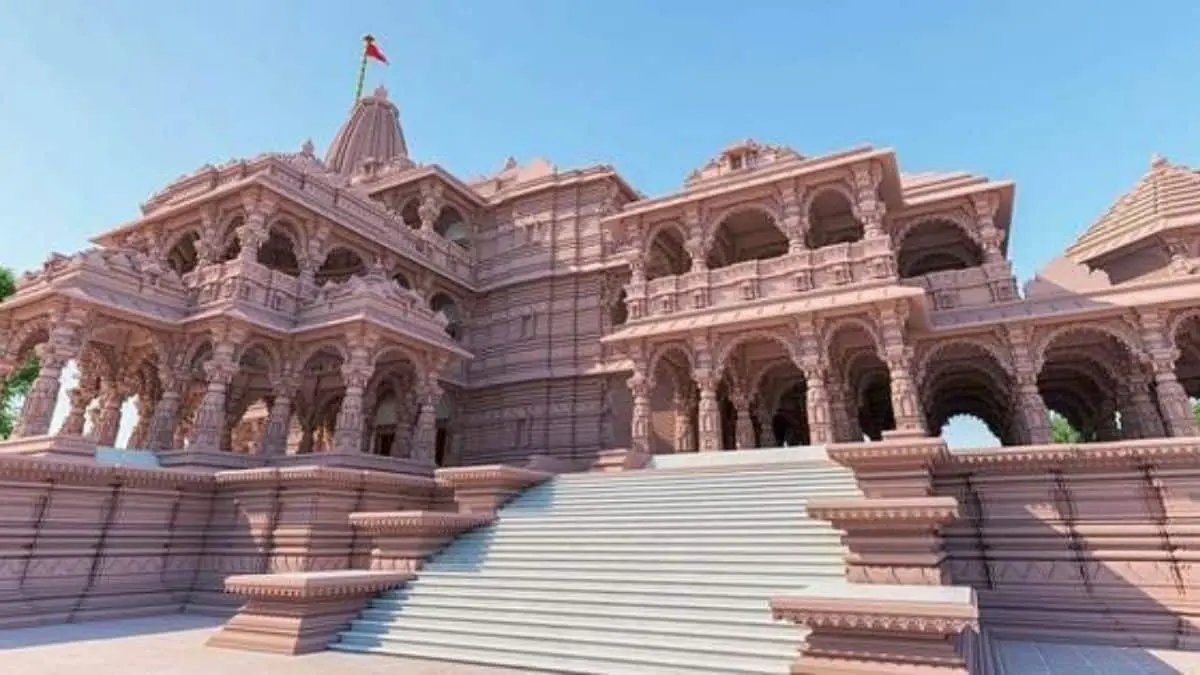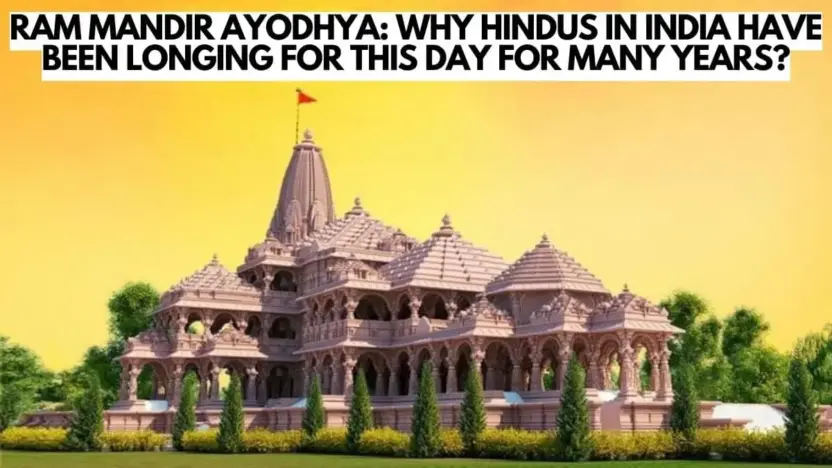The Ram Mandir is a new Hindu temple being built in Ayodhya, Uttar Pradesh, India. It’s at a special place believed to be the birthplace of Lord Rama, a major Hindu god. The construction started in August 2020 after a special ceremony led by India’s Prime Minister Narendra Modi. This temple is being made by a group called the Shri Ram Janmabhoomi Teerth Kshetra Trust. The big day to open the temple is set for January 22, 2024.
Hindus in India have been longing for the construction of the Ram Mandir in Ayodhya for many years. This desire is deeply rooted in religious, historical, and cultural sentiments, and tied to several key factors.
Religious Significance:

Lord Rama, central to Hinduism, is revered as Vishnu’s seventh avatar and the protagonist of the Ramayana. Ayodhya, believed to be his birthplace (Ram Janmabhoomi), holds immense spiritual importance. Constructing the Ram Mandir there fulfills a deep spiritual yearning among Hindus to venerate Lord Rama at his historical birthplace.
This temple is not merely a structure but a sacred embodiment of Lord Rama’s presence and teachings, symbolizing devotion, righteousness, and dharma (moral duty) that Rama epitomized, making it a pivotal site for worship and pilgrimage.
Cultural and Historical Importance:
The Ramayana, with Lord Rama at its heart, has profoundly influenced Indian culture, arts, and everyday life for centuries. It’s a cornerstone of Indian ethos, imparting moral lessons and shaping societal values.
The desire for a temple at Lord Rama’s birthplace transcends religion, reflecting a broader cultural yearning to honor a legacy integral to India’s identity. This temple serves as a living homage to the Ramayana’s impact, celebrating and perpetuating its cultural, historical, and ethical relevance in contemporary Indian society and beyond.
Ayodhya Dispute and the Quest for Resolution:
The Ayodhya dispute, centering on the contested Ram Janmabhoomi and the Babri Masjid, has been a focal point of religious and political contention in modern India. The mosque’s demolition in 1992 escalated the dispute, leading to prolonged legal battles and communal tensions.
Many perceived the Supreme Court’s 2019 verdict, which allocated the land for the Ram Mandir, as a watershed moment that brought closure to a long-standing conflict. It represented a significant judicial intervention in reconciling historical claims with contemporary societal needs.
Symbol of Identity and Unity:

The Ram Mandir transcends religious significance, embodying a symbol of Hindu identity and unity. In India’s diverse and pluralistic society, the temple represents a shared cultural and mythological heritage, potentially serving as a unifying force.
It reflects a collective memory and a common thread in the narrative of Hindu identity, offering a space for communal harmony and spiritual solidarity. Thus, the temple’s construction marks a milestone in celebrating and preserving a shared cultural legacy.
Political and Social Movements:
The campaign for the Ram Mandir has been pivotal in Hindu nationalist movements, symbolizing a broader struggle for religious and cultural identity. This movement, gaining momentum in the late 20th century, became a rallying cry, intertwining religious aspirations with political objectives.
It mobilized various social and political groups, catalyzing a significant shift in India’s political landscape. Thus, the temple’s construction intertwines with the aspirations of a significant section of the Hindu population, who seek to assert and reaffirm their religious and cultural heritage.
Historical and Archaeological Aspects:

The belief in a pre-existing temple at the Babri Masjid site, substantiated by certain historical and archaeological findings, has been a critical factor in the demand for the Ram Mandir. These findings fueled the conviction that the site holds ancient religious significance, warranting the restoration of a temple.
The push for the temple, therefore, is not just a religious endeavor but an active effort to reclaim and preserve a site of historical and cultural significance, essential to the Hindu narrative and legacy.
Also Read: Epic Battles of Krishna: Valor and Virtue in Hindu Mythology



